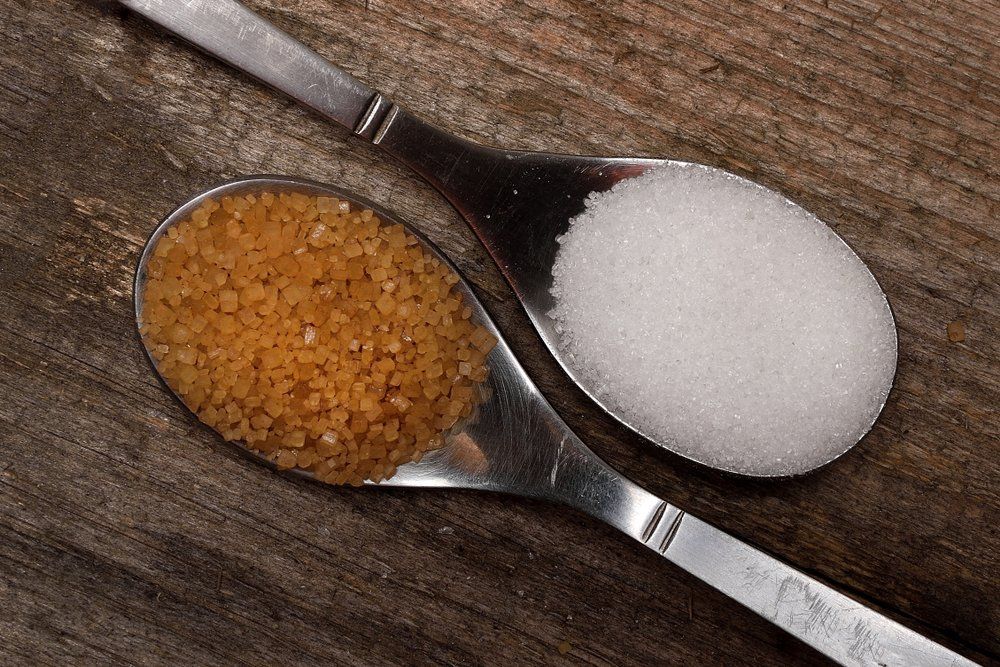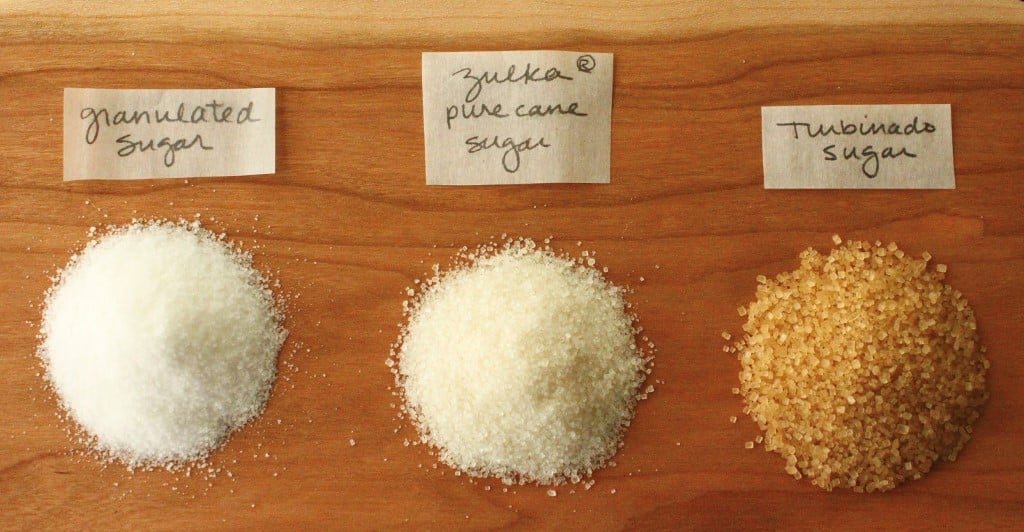Sugar beet vs sugar cane: Wellness aspects evaluated
Comprehending Sugar Beet Vs Sugar Cane: a Deep Study Their Processing and Applications
The comparison in between sugar beet and sugar cane discloses important distinctions in their handling and use. Each plant has one-of-a-kind cultivation methods that affect its geographical distribution. Sugar beets are mostly processed right into granulated sugar for various food products, while sugar cane is typically made use of in beverages. Comprehending these differences clarifies their duties in the food industry and their financial significance. The wider implications of their farming and processing require additional expedition.
Summary of Sugar Beet and Sugar Cane
Sugar beet and sugar cane are 2 primary resources of sucrose, each adding considerably to the global sugar supply. Sugar beet is a root veggie, usually collected in cooler climates, while sugar cane is a tall lawn that flourishes in warmer exotic and subtropical areas. The handling of sugar beet entails cleaning, cutting, and removing juice, adhered to by filtration and condensation. In comparison, sugar cane processing includes crushing the stalks to remove juice, which is then clarified and concentrated right into sugar crystals.
Both plants are abundant in sucrose, yet their structure differs slightly, with sugar cane usually having a greater sugar web content. Each resource likewise contributes in biofuel production, with sugar beet frequently made use of for ethanol. While both are necessary for various applications, their distinctive development needs and handling techniques influence their corresponding payments to the sugar market.
Geographical Circulation and Farming Problems
Sugar beet and sugar cane are grown in distinct geographic regions, influenced by their particular climate and soil requirements. Sugar cane prospers in exotic environments, while sugar beet is better fit for temperate zones with cooler temperature levels. Recognizing these farming problems is essential for enhancing production and making certain quality in both crops.
Worldwide Expanding Areas
While both sugar beet and sugar cane are necessary resources of sugar, their international expanding regions vary significantly due to climate and soil needs. Sugar beet prospers primarily in pleasant areas, with considerable manufacturing focused in Europe, The United States And Canada, and parts of Asia. These areas generally include well-drained, fertile soils that support the crop's development cycle. On the other hand, sugar cane is greatly cultivated in tropical and subtropical regions, with significant production hubs located in Brazil, India, China, and Thailand. This crop embellishments in cozy, moist environments that promote its growth. The geographical distribution of these two crops highlights the versatility of sugar cane to warmer climates, while sugar beet stays reliant on cooler, pleasant problems for peak development.
Environment Requirements
The environment requirements for sugar beet and sugar cane differ markedly, mirroring their adjustment to unique ecological conditions. Sugar beet flourishes in warm climates, needing cool to mild temperature levels, preferably varying from 15 ° C to 20 ° C. It is delicate to frost and gain from well-distributed rains throughout its expanding period. This plant is commonly cultivated in areas such as Europe and The United States And Canada.
Conversely, sugar cane embellishments in exotic and subtropical environments, favoring warmer temperature levels between 20 ° C and 30 ° C - Sugar beet vs sugar cane. It requires abundant sunshine and constant rains, making it appropriate to areas like Brazil, India, and Southeast Asia. The different environment preferences of these plants significantly influence their geographical distribution and agricultural practices
Dirt Preferences
Both sugar beet and sugar cane call for particular dirt conditions to prosper, their preferences vary substantially. Sugar beetroots grow in well-drained, fertile soils rich in raw material, with a pH ranging from 6.0 to 7.5. These conditions are generally discovered in warm regions, especially in Europe and North America. In contrast, sugar cane likes deep, fertile dirts with outstanding drain and a slightly acidic to neutral pH (6.0 to 7.0) This crop is primarily cultivated in exotic and subtropical environments, such as Brazil, India, and Australia. The geographic distribution of these crops mirrors their soil preferences, as sugar beets are suited for cooler climates, while sugar cane prospers in warmer, more damp atmospheres.
Collecting and Processing Techniques
In analyzing the harvesting and handling methods for sugar beet and sugar cane, unique methods emerge for each plant. The comparison of collecting techniques discloses variants in efficiency and labor needs, while removal techniques highlight differences in the initial handling phases. In addition, recognizing the refining procedures is crucial for assessing the quality and yield of sugar produced from these two resources.
Collecting Techniques Contrast
When considering the collecting methods for sugar beet and sugar cane, distinct strategies arise that show the unique characteristics of each crop. Sugar beet gathering generally involves mechanical methods, utilizing specialized harvesters that uproot the beetroots from the ground, eliminating tops and dirt in the procedure. This method enables effective collection and minimizes plant damage. On the other hand, sugar cane harvesting can be either hand-operated or mechanical. Hands-on harvesting involves employees reducing the stalks short, while mechanical harvesting uses huge machines that cut, chop, and collect the cane in one operation. These distinctions in gathering methods highlight the flexibility of each plant to its growing setting and the farming practices widespread in their respective regions.
Extraction Techniques Introduction
Removal techniques for sugar production differ substantially in between sugar beet and sugar cane, mirroring their special attributes and handling demands. Sugar beets are typically harvested using mechanical harvesters that cut the origins from the ground, followed by cleaning to get rid of dirt. The beets are then sliced right into thin pieces, referred to as cossettes, to promote the removal of sugar through diffusion or warm water removal. In contrast, sugar cane is generally collected by hand or equipment, with the stalks cut short. After gathering, sugar cane undergoes squashing to remove juice, which is then made clear and focused. These removal techniques highlight the distinct methods used based upon the resource plant's physical qualities and the preferred effectiveness of sugar extraction.
Refining Processes Clarified
Refining processes for sugar from both sugar beet and sugar cane involve numerous necessary actions that ensure the end product is pure and ideal for intake. The raw juice extracted from either resource undertakes explanation, where pollutants are eliminated utilizing Resources lime and heat. Following this, the juice is evaporated to concentrate the sugars. For sugar beetroots, the process commonly includes carbonatation, while sugar cane may go through a much more straightforward formation technique. Once concentrated, the syrup goes through crystallization, creating raw sugar. Lastly, the raw sugar is cleansed with centrifugation and further refining, causing the white granulated sugar generally found on shop racks. Each step is important in ensuring item high quality and security for customers.
Nutritional Profiles and Health And Wellness Impacts

Wellness impacts related to both resources largely stem from their high sugar web content. Excessive consumption of sucrose from either source can result in weight gain, dental problems, and boosted threat of chronic illness such as diabetes and heart problem. Sugar cane juice, commonly consumed in its all-natural kind, may offer added anti-oxidants and phytonutrients compared to polished sugar beet products. Inevitably, moderation is type in utilizing both sugar beet and sugar cane in diets to minimize possible wellness dangers.
Financial Value and Worldwide Manufacturing
The economic relevance of sugar beet and sugar cane is considerable, since both crops play necessary roles in the international agricultural landscape. Sugar cane, mainly grown in exotic and subtropical regions, accounts for around 75% of the globe's sugar manufacturing. Countries like Brazil and India are leading producers, adding significantly to their national economies with exports and local intake.

The worldwide sugar market is valued at billions of bucks, influenced by different aspects including climate, trade plans, and customer demand. Accordingly, both sugar beet and sugar cane are important for financial stability and growth within the agricultural field worldwide.
Applications in the Food Sector
In the food industry, sugar beet and sugar cane serve necessary duties, providing sugar that are integral to a broad selection of items. Both sources generate granulated sugar, which is a key active ingredient in baked items, drinks, and confections. Sugar beet, typically preferred in areas with colder climates, is frequently found in processed foods such as jams, jellies, and dairy items. you could look here Sugar cane is favored in tropical regions and is frequently made use of in drinks like rum and soft drinks.
Beyond granulated sugar, both resources are additionally processed right into molasses, syrups, and other sweeteners, improving taste Clicking Here accounts and enhancing structure in numerous applications. Furthermore, the byproducts of sugar production, such as pulp and bagasse, are used in developing animal feed and biofuels, further demonstrating their flexibility. Generally, sugar beet and sugar cane are crucial elements of the food industry, influencing preference, appearance, and total product high quality.
Environmental Considerations and Sustainability
As worries concerning environment adjustment and source exhaustion expand, the environmental effect of sugar beet and sugar cane growing has actually come under examination. Sugar cane, commonly grown in exotic regions, can lead to logging and environment loss, worsening biodiversity decrease. Additionally, its cultivation often relies upon extensive water usage and chemical plant foods, which can pollute neighborhood waterways.
Conversely, sugar beet is typically grown in pleasant climates and might promote soil health via plant rotation. It likewise deals with difficulties such as high water intake and dependence on chemicals.
Both crops add to greenhouse gas exhausts during processing, but sustainable farming practices are emerging in both industries. These consist of accuracy farming, natural farming, and incorporated parasite monitoring. On the whole, the ecological sustainability of sugar production remains a pushing problem, requiring continuous assessment and fostering of environment-friendly practices to minimize negative effects on environments and neighborhoods.

Frequently Asked Concerns
What Are the Differences in Preference Between Sugar Beet and Sugar Cane?
The preference differences between sugar beet and sugar cane are refined yet unique. Sugar beet tends to have a somewhat earthier taste, while sugar cane provides a sweeter, much more fragrant account, interesting various culinary preferences.
Can Sugar Beet and Sugar Cane Be Made Use Of Mutually in Recipes?
Sugar beet and sugar cane can typically be used interchangeably in recipes, though refined differences in flavor and texture may develop. Substituting one for the various other typically keeps the intended sweet taste in culinary applications.

What By-Products Are Produced From Sugar Beet and Sugar Cane Handling?
The processing of sugar beetroots and sugar cane returns numerous byproducts. These consist of molasses, pet feed, and biofuels. Each by-product serves distinct purposes, adding to farming and commercial applications past the key sugar extraction.
How Do Sugar Beet and Sugar Cane Affect Soil Wellness?
The effect of sugar beet and sugar cane on soil wellness differs; sugar beetroots can enhance raw material, while sugar cane might cause dirt destruction if not taken care of properly, impacting nutrient levels and dirt framework.
Exist Details Ranges of Sugar Beet and Sugar Cane?
Various details selections of sugar beet and sugar cane exist, each adjusted to different environments and dirt types. These ranges are grown for attributes such as yield, disease resistance, and sugar material, optimizing farming efficiency.